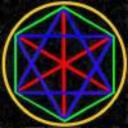Yahoo Answers is shutting down on May 4th, 2021 (Eastern Time) and beginning April 20th, 2021 (Eastern Time) the Yahoo Answers website will be in read-only mode. There will be no changes to other Yahoo properties or services, or your Yahoo account. You can find more information about the Yahoo Answers shutdown and how to download your data on this help page.
Trending News
5 Answers
- 1 decade agoFavorite Answer
Samhain is the now version of Halloween. Back then it wasnt candy, parties and costumes it was an actually tradtition that people would do to honor their dead ancestors or family. If you would like a full discription email me a twitches_artemis666@yahoo.com. thank you.
light and love
Source(s): "The Day of the Dead" - 1 decade ago
/saun/ or /SAW in/ [Irish] The first day of November, celebrated by the ancient Celts as a festival marking the beginning of winter and of the new year according to their calendar; All Saint's Day or Hallowmass. cf. Beltane -- Samhain Eve became known as All-Hallows' Even, corrupted to Hallow-e'en and now spelled Hallowe'en or Halloween.
Source(s): http://www.answers.com/samhain - 1 decade ago
Samhain is the winter season of the ancient Celts. The Celts divided the year into four quarters: Samhain (winter), Imbolc (spring), Beltane (summer), and Lughnasadh (autumn). The Celtic year began in November, with Samhain. The Celts were influenced principally by the lunar and stellar cycles which governed the agricultural year - beginning and ending in autumn when the crops have been harvested and the soil is prepared for the winter. Pronunciation differs radically between different groups of Celtic language speakers.
Samhain Eve, in Erse, Oidhche Shamhna, is one of the principal festivals of the Celtic calendar, and is thought to fall on or around the 31st of October. It represents the final harvest. In modern Ireland, the name by which Halloween is known in the Irish language is still "OÃche Shamhna".
Bonfires played a large part in the festivities. Villagers cast the bones of the slaughtered cattle upon the flames. (the word bonfire is thought to derive from these "bone fires.") With the bonfire ablaze, the villagers extinguished all other fires. Each family then solemnly lit their hearth from the common flame, thus bonding the families of the village together. Like most Celtic festivals, it was celebrated on a number of levels. Materially speaking it was the time of gathering food for the long winter months ahead, bringing people and their livestock in to their winter quarters. To be alone and missing at this dangerous time was to expose yourself and your spirit to the perils of imminent winter. In present times the importance of this part of the festival has diminished for most people. From the point of view of a tribal people for whom a bad season meant facing a long winter of famine in which many would not survive to the spring, it was paramount.
Samhain was also a time for contemplation. Death was never very far away, yet to die was not the tragedy it is in modern times. Of signal importance to the Celts people was to die with honour and to live in the memory of the tribe and be honoured at the great feast (in Ireland this would have been the Fleadh nan Mairbh (Feast of the Dead)) which took place on Samhain Eve.
This was the most magical time of the year; Samhain was the day which did not exist. During the night the great shield of Skathach was lowered, allowing the barriers between the worlds to fade and the forces of chaos to invade the realms of order, the material world conjoining with the world of the dead. At this time the spirits of the dead and those yet to be born walked amongst the living. The dead could return to the places where they had lived and food and entertainment were provided in their honour. In this way the tribes were at one with its past, present and future. This aspect of the festival was never totally subdued by Christianity.
On the level of cosmic event, the rising of Pleiades, the winter stars, heralds the supremacy of night over day, the dark half ruled by the realms of the moon.
In the three days preceding the Samhain month the Sun God, Lugh, maimed at Lughnassadh, dies by the hand of his Tanist (his other self), the Lord of Misrule. Lugh traverses the boundaries of the worlds on the first day of Samhain. His Tanist is a miser and though he shines brightly in the winter skies he gives no warmth. and does not temper the breath of the Crone, Cailleach Bheare, the north wind. In this may be discerned the ageless battle between the light and dark and the cyclic nature of life and the seasons.
In parts of western Brittany Samhain is still heralded by the baking of kornigou. Kornigou are cakes baked in the shape of antlers to commemorate the god of winter shedding his "cuckold" horns as he returns to his kingdom in the Otherworld.
When the Romans made contact with the Celts, they added their feast of the dead to Samhain. The Christians subverted the recognition of Samhain to honor the saints, as All Saint's Day on November 1st and named October 31 as All Hallow's Eve. This latter became a secular holiday by the name of Hallowe'en. Although using different nomenclatures, all of these festivals and feasts are celebrating the accessibility, veneration, awe, and respect of the dead.
- Anonymous1 decade ago
samhain is the pagan form of Halloween it is October 31st and it is celebrated as the end of the old year and beginning of the new year, think of it as a pagan new year eve
Source(s): i'm a wiccan/pagan - How do you think about the answers? You can sign in to vote the answer.






